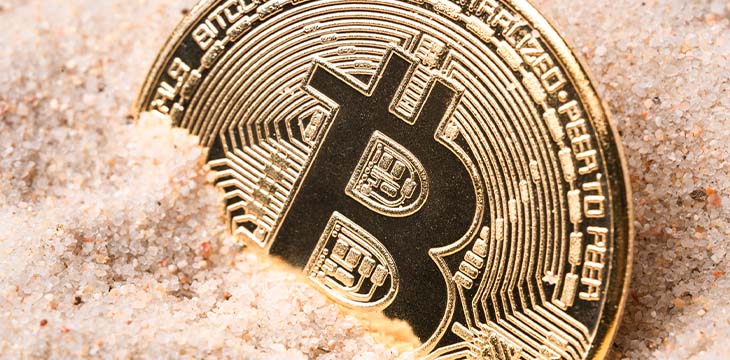Warning: This piece will spoil elements of the Dune series, while giving a disclaimer that it is nearly impossible to succinctly cover all of the themes of the series in a single piece.
No more terrible disaster could befall your people than for them to fall into the hands of a Hero. – Frank Herbert, Dune
Dune is the story of a boy named Paul Atreides who is thrust into a foreign land where the outgoing rulers see him as an enemy and the local people see him as a savior. The story examines the consequences of Paul’s terrible purpose of leading the local people in rebellion against the occupying forces of their land. Dune is the not the typical white savior trope that we see in countless stories throughout history, rather it is an examination of the dangers that heroes present to the people they give promise to. It forces us to ask hard questions about the natures of leaders in society and the ramifications of their actions long after they are gone.
But oh, the perils of leadership in a species so anxious to be told what to do. How little they knew of what they created by their demands. Leaders made mistakes. And those mistakes, amplified by the numbers who followed without questioning, moved inevitably toward great disasters. – Frank Herbert, Chapterhouse: Dune
In 2010, just a year after launching the Bitcoin project, Satoshi Nakamoto was already seeing the terrible purpose of what he started. Radical elements in the small Bitcoin community wanted to use Bitcoin as a political tool to help Wikileaks, who at the time was struggling to find banking partners. Satoshi made a plea to Wikileaks not to use Bitcoin, which he saw as “a small beta community in its infancy.” Later that year, just prior to Satoshi’s public exit from the project, he wrote that “Wikileaks has kicked the hornet’s nest, and the swarm is headed towards us.”
Two days later, he wrote his last public post on the forum. Two months later, Silk Road would officially launch and enable the buying and selling of drugs and other illicit material—utilizing Bitcoin as the currency of the market.
Throughout the story of Dune, Paul continually can see into the future and recognizes that by taking on the mythical role of Muad’Dib, he will enact his terrible purpose across the universe. He sees legions of soldiers taking up arms across the universe and enacting bloodshed in his name. Paul knows that by donning the myth of Muad’Dib and succeeding in helping to liberate the Arrakeen people on Dune, he will cause greater turmoil as a result.
Satoshi Nakamoto didn’t intend to create a mythology around himself, but the mysterious way he emerged and departed did that on its own. While Satoshi couldn’t see into the future, he seemed to have a prescience for the trouble that was coming his way.
I would prefer to be secret now. I don’t think I should have to be out there… I don’t want money, I don’t want fame, I don’t want adoration, I just want to be left alone… I had other people decide [to out me as the creator], and they’re making [my] life very difficult. – Craig Wright, AKA Satoshi Nakamoto in 2016
In 2015, Dr. Craig S. Wright was, against his will, doxed as the creator of Bitcoin, though some had begun piecing together the story even earlier. Up until this point, Satoshi Nakamoto lived as a myth in the minds of Bitcoiners—a mysterious figure that had, like Prometheus, gifted humanity with a technology that allowed for unprecedented amounts of economic innovation. Craig was clearly uncomfortable donning the role of Satoshi Nakamoto—he had a hard time admitting that he created Bitcoin to reporters that asked him. He even mentioned to Andrew O’Hagan that he thought he would never have to admit that he was Satoshi, and would have preferred it that way.
Early on, Craig Wright tried his hardest to kill the mythos of Satoshi Nakamoto. While most people were expecting some kind of God to emerge, they instead got Craig—a loud-mouthed Australian who didn’t always interact well with other people. Craig saw churches dedicated to Satoshi Nakamoto emerge and saw it as “a hugely negative thing”—but there was nothing he could do to stop it. He sought a different path—in 2017 he stated that he was “here to kill off Satoshi”: “There is no fucking king. There is no glorious leader [of Bitcoin]… There is not going to be some great leader standing above… There is not going to be one person that we come and answer to.”
If you want a system to be built on truth and start trying to get people to understand, what’s better: a scenario where people blindly follow you because of a name or a slow battle where you convince people using facts, mathematics and science? I’ll tell you that people don’t learn if you come out there and build a cult of followers. They spout what you say, but don’t understand it. – Craig Wright, AKA Satoshi Nakamoto in 2018
Unsurprisingly, Dr. Wright’s favorite novel as a teenager was Dune. In 2017 and 2018 we saw Craig try his hardest to kill the mythos of Satoshi and use reason to convince the world why his vision for Bitcoin was the vision of its creator. After giving birth to a cryptocurrency industry rife with scams, Ponzi schemes, and outright fraud—Craig saw it as his responsibility to preach the truth about Bitcoin. Like Paul Atreides, he learned how hard it was to kill a myth.
Years after Paul becomes Emperor of the Universe, a religion is formed around Muad’Dib. Paul endures an assassination attempt by the priests of this religion who had hoped to turn Paul into a martyr, allowing them to control the religion of Muad’Dib. Paul escapes these attempts and retreats to the desert, where he was largely viewed to have been dead. He re-emerged in disguise as a preacher, preaching against the exaltation of Muad’Dib. This angered the priests of the religion of Muad’Dib, and they sought a way to silence him. Paul ultimately fails, and is killed by his own followers.
Greatness is a transitory experience. It is never consistent. It depends in part upon the myth-making imagination of humankind. The person who experiences greatness must have a feeling for the myth he is in. He must reflect what is projected upon him. And he must have a strong sense of the sardonic. This is what uncouples him from belief in his own pretensions. The sardonic is all that permits him to move within himself. Without this quality, even occasional greatness will destroy a man. – Frank Herbert, Dune
In 2019, something changed for Craig. Craig began to embrace his identity as Satoshi Nakamoto. In June of 2019 he, for the first time publicly, definitively stated to Jimmy Nguyen on stage at CoinGeek that he was the inventor of Bitcoin and the author of the 2008 Bitcoin whitepaper. He became comfortable as Satoshi Nakamoto. He began to speak openly about his past mistakes, took pleasure in some of the mystery around the Satoshi myth, and began speaking more heavy-handed about the nature of the Bitcoin protocol:
Let me make this absolutely abundantly clear. I’m not here to be your friend, and I won’t do anything that changes the nature of bitcoin just because people will like me or stop treating me like shit. I created bitcoin for a reason, and I don’t really care if you like that reason or not, and I’m not putting up with crap from other people who think I should have done it differently. – Craig Wright, AKA Satoshi Nakamoto in 2021
It’s clear what changed for Craig—in 2018 Ira Kleiman began a lawsuit against Craig over billions in Bitcoin arguing that his brother’s estate was entitled to half of Satoshi Nakamoto’s bitcoins. By 2019, it seemed inevitable that the truth would have to come out. The decision to embrace his identity of Satoshi Nakamoto was decided for Craig, despite his unwillingness to do so: “I wanted to remain private. They took that away.”
In two weeks, Craig and Ira Kleiman will go to court in Florida to decide the fate of Satoshi Nakamoto’s bitcoins. The mythology of the mysterious Satoshi Nakamoto will dissolve into depositions, email exhibits, and cross-examinations. Despite the attempts by the BTC priesthood to martyr Satoshi as the anti-establishment cypherpunk that they want him to be, we will learn about the brilliant, yet flawed, man that he is instead. The statues, churches, and lies will be torn down.
Satoshi Nakamoto has not asked you to follow him. Satoshi Nakamoto released a force upon the world that became its own myth. Others have cultivated this myth to serve their own purposes—financial, political, and philosophical. Craig could have signed with a key in 2016 and used the myth for his own aim, but he seemed to understand the trap Frank Herbert warns about Greatness:
“If I sign myself Jean-Paul Sartre it is not the same thing as if I sign myself Jean-Paul Sartre, Nobel Prize winner,” Jean-Paul Sartre said when he received the Nobel Prize for Literature in 1964.
Knowing there’s a trap is the first step in evading it — the first step along the Golden Path. – Frank Herbert, Children of Dune
The Dune series ultimately shows us that Paul isn’t the hero that is promised at the beginning of the story. It shows the dangers in worshipping the hero, and the impossibility of any one man to live up to the myths that are built around heroes. We learn, eventually, that Paul’s ability to see into the future led him to reject the terrible purpose he saw for himself. Far into the future he saw the extinction of humanity if it stagnated and remained confined within the known universe and rigid class structure of the Imperium. However, Paul couldn’t bring himself to do what had to be done to prevent it. His son, Leto, takes on this challenge and eventually transforms into a sandworm (yeah—it gets weird) that lives for tens of thousands of years to “teach humanity a lesson that they will remember in their bones.” Leto becomes a tyrannical “God Emperor” in order to enact the Golden Path. Leto was seen as a God to the people he ruled, but his inner thoughts were utterly human. This tyrannical approach ultimately enacted a scattering across the Universe to ensure the survival of the human race and an appreciation for freedom.
Leto’s Golden Path was to ensure the survival of humanity. By 2017, Craig Wright had enacted his own Golden Path to ensure the survival of Bitcoin.
Up to 2017, Craig tried to use reason and logic to convince the global Bitcoin economy to increase the block size and restore the original Bitcoin protocol. By the end of the year, he was helping BCH to do just that. By 2018, he learned the futility of trying to reason with those that sought to stagnate the growth of Bitcoin with protocol tinkering. Satoshi enacted his own Golden Path—restoring and locking the protocol down to ensure that Bitcoin could not go extinct. To some developers this is tyrannical—the BCH/BTC developers that wanted CTOR, DATASIGVERIFY, Schnorr Signatures, Taproot, Segwit, and more certainly think so. Craig Wright sees all of these as extinction threats to Bitcoin, and anyone who truly understands his creation can be gifted the same prescience.
We are currently living in Satoshi Nakamoto’s Golden Path. It exists as something that you and I have no control over, but are trapped in.
The power to destroy a thing is the absolute control over it. – Frank Herbert, Dune
Satoshi Nakamoto controls the fate of Bitcoin in his hands. When this court case is over, the owner of the Satoshi bitcoins will have the ability to destroy BTC, BCH, and/or BSV in an instant. This is terrifying to those who do not want Satoshi’s identity to be revealed. Coinbase went so far as to list the unmasking of Satoshi Nakamoto as a risk factor in their Initial Public Offering.
Someone who understands Herbert’s lesson on “Greatness” would be a terrifying Satoshi Nakamoto to all of those who sought to usurp his invention for their own personal triumphs. Unfortunately for some, it seems Satoshi Nakamoto learned quite a bit from Dune:
It is not being Paul that is hardest, it is being Leto and acceptance of change. Being an agent of change. Being changed. – Craig Wright, AKA Satoshi Nakamoto in 2019
New to blockchain? Check out CoinGeek’s Blockchain for Beginners section, the ultimate resource guide to learn more about blockchain technology.








